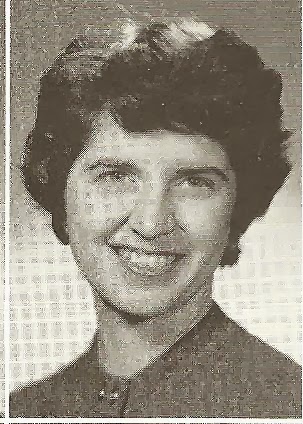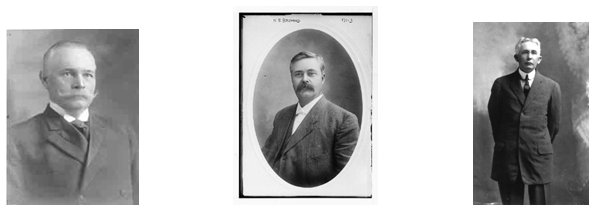JW: Wreck Site of the SS Gulf America
by
The wreck of
the SS Gulf America, or what is left
of it, lies beneath 65 feet of water 12 miles south and east of the Mayport
Jetties. The ship has been there since
April 16, 1942, six days after it was first torpedoed by a German U-boat during
the Second World War. The ship's resting
place is well known to the area's local off-shore fishermen. It is marked "JW" on their
charts, but many of the people who fish there don't know that
"JW" is an abbreviation for "Jacksonville (Beach) Wreck,"
and even fewer of them know the history behind the name.
On April
10th of 1942, an estimated 75,000 to
85,000 combined Filipino and American soldiers had just surrendered to the
Japanese on the Island of Luzon and were beginning a weeklong forced march to
P.O.W. camps to their north. That
hellish ordeal would come to be known as
the "Bataan Death March." On
that same day, twelve time zones ahead, and half a world away from Bataan, it was
10:00 p.m. in Jacksonville Beach. It had been four months since the surprise
attack on Pearl Harbor, but tourists and sailors were cruising the Beaches'
Boardwalk and bars as if the country was still not at war. If local Civil Defense officials had any
black-out plans for North Florida's coastline, those plans had not been
implemented. It was a beautiful moonlit
Friday night with only a light westerly breeze stirring the air, and Jacksonville Beach was just twenty minutes
from having World War II explode at its own front door.
| Jacksonville Beach Boardwalk circa 1942 |
That same
night, Oscar Anderson, Master of the Gulf Oil Corporation's newest 8,081 ton
tanker SS Gulf America had just decided
to abandon the classic zigzag maneuvering normally used by merchant vessels to
thwart torpedo attacks from enemy submarines during war times. The ship was making her maiden voyage from
Port Arthur, Texas to New York laden with 101,500 barrels of furnace oil. She was traveling unescorted along Florida's
Atlantic Coast making about 12 knots. What Captain Anderson did not know, was that since passing St. Augustine, he had
been followed by German U-Boat 123 which had been patrolling Florida's East
Coast, looking for prey.
 |
| German Submarine of the same class as U 123
|
At 10:10
p.m., 28 year old U-boat commander Reinhart Hardegen ordered his submarine brought up to periscope depth and
turned a-port to face west. As he looked through the eyepiece of his periscope Hardegen could scarcely believe his own good luck. Both ships were less than five miles from shore
and the Jacksonville Beach Boardwalk was lit up like a Christmas tree. He could see the headlights of cars driving
along the beach, lights from the roller
coaster, the Jacksonville Beach Pier, and neon-lit bar signs. The SS Gulf
America was passing between him and the brightly lit coastline, offering a
perfectly silhouetted target steaming north in an absolutely straight line. At
10:20 p.m., Hardegan gave the order to
fire a torpedo.
 |
| Reinhart Hardegan Capt. U 123 |
Meanwhile, ten-year old Jan Swanson (McCracken) was
watching a movie inside the Beaches Theater at 3rd Ave N. and First Street when the impact from an explosion shook the building. She and her friends ran out of the theater,
crossed First Street, and raced to the boardwalk to investigate the commotion. All of the usual activity on the Boardwalk
had stopped. Everyone's attention was focused seaward. The SS Gulf America had taken a torpedo hit
to the starboard side and was hemorrhaging tons of bunker-C oil and diesel fuel
into the Atlantic Ocean. Moments
later, the submarine surfaced, circled
around between the mortally wounded tanker and the beach, and began shelling
the tanker with her deck guns. The
tracer rounds were clearly visible to the people on the boardwalk.
Gunner's
Mate Robert E. Lee Watson was sleeping in the aft cabin on the starboard side
of SS Gulf America when the torpedo struck.
His wallet with $100.00 in cash and his
U.S. Navy dog tags were in a top dresser drawer against the aft
bulkhead. Watson was part of a seven man U.S.
Navy gun crew assigned to compliment the tanker's regular 41 Merchant Marines. Lee
Watson's job was to operate the ship's deck guns if the tanker ever came under
attack. By the time Watson had reached
the weather decks any thoughts about his wallet, deck guns, or even a life
boat, evaporated in the heat of oil
flames. He went over the side and for next
six hours he endured fear, fatigue, petrochemical burns, and hypothermia, before being rescued by a commandeered yacht.
As crewmen
from the tanker began to lower lifeboats and jump into the oil soaked Atlantic,
a ball of fire erupted engulfing the tanker in flames, and setting the Atlantic
Ocean around it ablaze. Now the
submarine's low profile was silhouetted in the glow of the burning tanker and
the westerly breeze was the only thing keeping the flames from singeing the
submarine's gun crew.
Lifeguard Corpsman Townsend Hawkes was on the boardwalk about 100 yards from the
American Red Cross Volunteer Lifesaving Station at the foot of Beach Blvd. when a fireball erupted, lighting up the
Eastern sky. The Lifesaving Corps kept
two planked wooden lifeboats at the station and the lifeguards drilled
frequently on launch and recovery procedures for beach rescues. The boats were usually crewed by four oarsmen
and a coxswain, to give boat commands and steer the craft. Hawkes sprinted to the Lifesaving Station and
with the help of another volunteer, the two young men pushed through the surf
and began to pull off toward the glowing
horizon.
 |
| Jacksonville Beach Lifesaving Station circa 1942 with rescue boats on the beach |
Carpenter's
Mate Howard Grisham, a Reserve sailor attached to Mayport Naval Station was on
liberty that night having a drink in a Jacksonville Beach bar when the torpedo
exploded. The bar emptied immediately
and like everyone else, Howard rushed to the boardwalk to take in the
spectacle. When he saw what was
happening he knew immediately that all liberty would be cancelled. He ran back into the empty bar, poured
himself another drink, wrote out an I.O.U. to the bartender, then rushed back
to Mayport to report for duty.
Naval Station Mayport seemed to be no better prepared for war than the civilian
population at the Beach had been. Mayport's war fleet consisted of a few fishing boats and private yachts that had
been "refitted" to wartime service by Reserve Carpenter's Mate
Grisham himself. He had mounted wooden guns to their decks to
create the illusion of martial
readiness. In at least one instance, a
real machine gun had been mounted to the deck of a shrimp boat, but when the
machine gun was fired, the recoil had pulled up the deck planks to which the
gun had been bolted. The base
"armory" was nothing more than a glorified gun locker whose total
collection of small arms could be carried away by one sailor.
 |
| SS Gulf America after being torpedoed by German Submarine U 123 |
When
Carpenter's Mate Grisham checked in with the OOD (duty officer) at the Navy base, he was immediately attached to the crew of a modified civilian Chris Craft that was
sent out to look for the submarine and rescue any survivors they might
encounter. When they reached the SS Gulf
America, the hulk was still burning but U-boat 123 had long since
departed. After being at sea for more
than seven hours, Grisham's crew had managed to find only one corpse, no survivors,
and no submarine. The ill prepared
rescue team was suffering from exposure, cramping, and fatigue
As other boats scoured the area some survivors were recovered, but for many, rescue efforts had come too late. Townsend Hawkes and his fellow oarsman had been blown 20 miles out to sea, past the wreck. Instead of rescuing survivors, they were lucky to be rescued themselves, by a Coast Guard vessel. For all their well-intentioned heroic efforts, the only citation they received was a stern reprimand from the Coast Guard. Ironically, Townsend Hawkes joined the Coast Guard shortly after the incident, and spent his wartime enlistment rendering similar service to others.As the patrol boats trickled back to Mayport some members of the rescue crews as well as the tankermen were in need of medical treatment. Carpenter's Mate Howard Grisham was returned to a makeshift infirmary suffering from severe leg cramps. He and everyone else who required emergency medical assistance received treatment from the closest thing Mayport had to a doctor, Pharmacist's Mate Frank Grisham, Howard Grisham's older brother.
Ed Smith, who for decades owned and operated Ed Smith's Lumber and Hardware store across the street from Pete's Bar in Neptune Beach, wrote THEM GOOD OLD DAYS at the Beaches and Mayport, 1974. In it, Ed relates his own story of being awakened by an explosion and counting about 17 tracer rounds being fired into the tanker by the German sub that night, then tells of the heroic rescue and recovery efforts launched by the Navy, Coast Guard, and volunteer lifeguard Townsend Hawkes. Coincidently, the Grisham brothers were also acquainted with Hawkes, who opened a real estate brokerage at the Beach shortly after the war ended. Since 1985 the Jacksonville Beach Lifesaving Corps has sponsored the Townsend Hawkes Annual (two mile) Swim, named in his honor.
Michael Gannon Ph.D., Professor Emeritus at the University of Florida, published his best selling novel Operation Drumbeat in 1990. In it Professor Gannon explains the German submarine operation from a geopolitical perspective. Captain Reinhart Hardegen was brought back from Germany to accompany Dr. Gannon on a promotional book signing tour. On July 18, 1990, there was a "reunion" between Capt. Hardegen and former Gunner's Mate Robert E. Lee Watson, who had been aboard the SS Gulf America, the night she had been torpedoed. That meeting, with pictures and other important first-hand historical information, is detailed in Charlie Hamaker's book, Cane Pole Wisdom Volume I, 2008.
Of the 48 men aboard the SS Gulf America that night, 19 of them perished in the incident. In addition to rescue and recovery efforts for personnel, boat crews from Mayport managed to salvage a deck gun from the forward end of the tanker just before it sunk. Florida's Governor, Spessard Holland ordered the state's coastline darkened, but bunker-C oil, floating debris, and dead bodies continued to wash ashore for days. World War II had come to the Beach.
 |
| Mrs. McCracken's 1962-1963 Fletcher Yearbook Picture |
Twenty years after the event, Jan Swanson McCracken, a history teacher at Fletcher Junior-Senior High School, would recall her memories of that night for the students in one of her 9th grade U.S. History classes. A Fletcher graduate herself and a lifelong Beaches resident, she worked for more than 40 years for the Duval County School Board before ending her career as the Vice Principal of Mayport Middle School.
If you are lucky enough to own an autographed copy of any of these books, or better yet, if you have an autographed copy that has also been signed by "Reinhart Hardegen Capt. U 123," you have a bona fide piece of Beaches' History in your hands. Hang on to it.
If you are lucky enough to own an autographed copy of any of these books, or better yet, if you have an autographed copy that has also been signed by "Reinhart Hardegen Capt. U 123," you have a bona fide piece of Beaches' History in your hands. Hang on to it.















